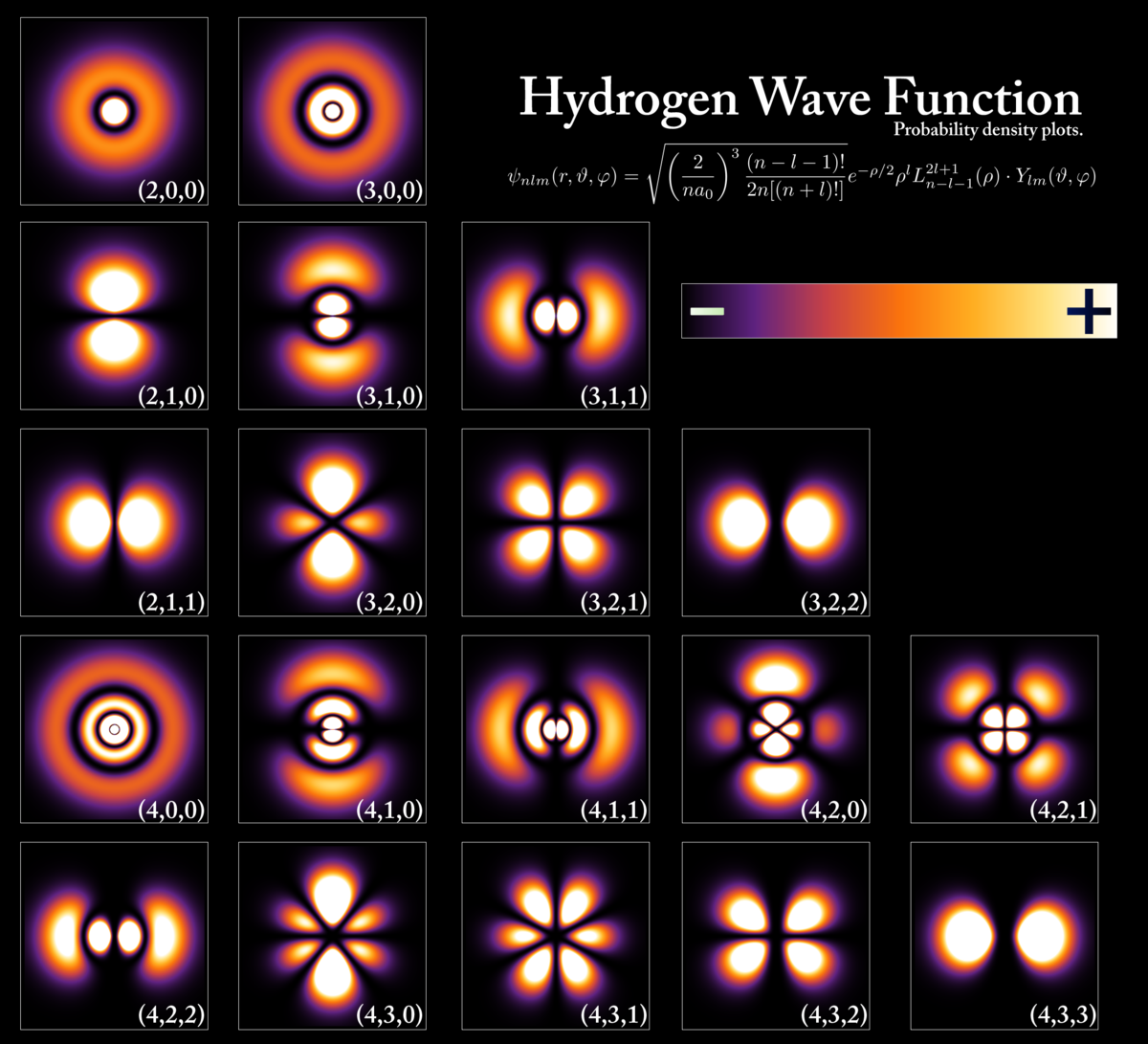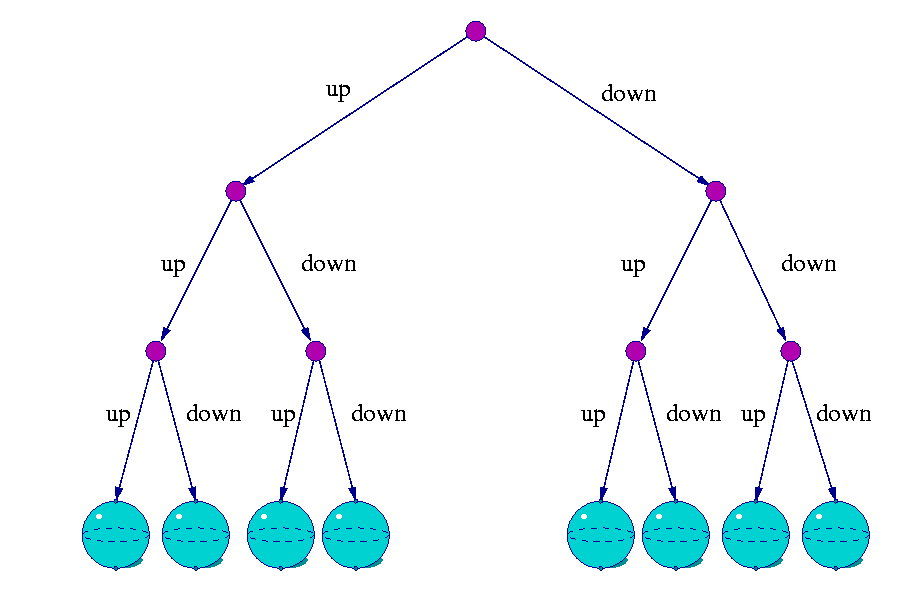Ways of Interpreting Quantum Mechanics: A Quick Look
Copenhagen, Parallel Worlds and Infinite trajectories: Time to dive into the weird.

Every physicist would agree that the greatest paradigm shift of the last century was the quantum. Quantum mechanics has changed the face of science. It can explain everything. Electricity? Yes. How birds fly in one direction? Yes. Gravity? No. But, today we won’t get to that. Instead we will talk about another conflict in the field, the conflict of interpreting quantum mechanics.
Some background

Quantum mechanics began when Max Planck discovered that light actually consisted of particles with some fixed energy. He dismissed this idea, but it was picket up by Albert Einstein a few years later to solve another prevalent problem of the time.
In the next decade, physicists like Niels Bohr, Erwin Schrodinger, Werner Heisenberg, Max Born, Paul Dirac etc. spearheaded progress in the field of quantum mechanics.
In a nutshell, quantum mechanics tells us that particles like electrons or protons do not have particular properties like position. An electron, for example, has no fixed and definite position. Instead, there are probable places where the electron can exist. But, then where does it exist? Which of those probable locations is the real location? Quantum mechanics tells us that there is no location! The electron gets a location when we try and measure it.
Now, for keeping track of all those probabilities (of where the electron can be), we have a mathematical object called the wave function. Every possible location of the electron is called a state, and the wave function gives the probability of the electron being in any one of the states. The wave function behaves like a wave, leading in the weird results found in experiments of particles behaving like waves. You may have heard that particles can be waves, but actually the wave behaviour is due to the wave function.

Okay. So that was a lot. But, there was still one lingering problem: the measurement problem. The wave function tends to spread out given time (like any normal wave does). This means that the number of probable locations of the electron increases¹. But, when we make a measurement to determine the position of the electron, we see it has a fixed location. So in the process of measuring the location, what happens to the spread out wave function? This is what we will be discussing today. The ways of interpreting the core idea of quantum mechanics.
The Copenhagen Interpretation
First, we will look at the oldest interpretation of this problem: the Copenhagen interpretation. This was the solution that the founding fathers themselves provided, and was backed ferociously by Niels Bohr.
The Copenhagen Interpretation tells us that when we make an measurement on the wave function, all the probabilities but one, drop to zero. The probability of the remaining state goes to one. This ensures that the electron has a fixed location and does not exist anywhere else. This action, of every probability going to zero except one, is known as the wave function collapse.

Now, can we predict which probability becomes one and which becomes zero? Nope. That is the core of the Copenhagen Interpretation. There is no way of telling where or how the wave function collapses. Every possible probability described by the wave function has an chance to become the true location.
The Copenhagen Interpretation was widely accepted by physicists at the time. The major opponent though was Albert Einstein. He hated the idea that wave function collapse was just a matter of pure chance, and that there was no actual way of determining it.
In fact, entanglement, one of the major predictions by quantum mechanics was devised by Einstein to prove this interpretation wrong.

There were in fact some holes in the interpretation. One was that the collapse would have to become instantaneously. Special Relativity, another Paradigm Shift of the previous century shows us that no co-related events can happen instantaneously. But the Copenhagen Interpretation clearly did imply exactly that: if the collapse is not instantaneous, then there would exist a small probability of the electron being elsewhere.
There was also the problem that this process of collapse did not conserve information. What happened to the information related to the other probabilities (or in jargon, states)? The Copenhagen Interpretation provides no answer.
There is also the problem of where the collapse actually happens. This was truly characterized by a thought experiment called Wigner’s friend. It asks the question, where does the collapse happen? Maybe when the electron is measured? Or when the information of the wave function enters our minds? There is no definitive answer here.
That is why a growing number of physicists find the Copenhagen Interpretation rather inaccurate. That is what led to the development of more such interpretations. We move on to number 2.
The Many-Worlds Interpretation
The Many Worlds Interpretation is the most science-fictional of all. Developed by Hugh Everett, it states that every possible state described by the wave function actually become the real location of the electron after measurement. How is that even possible? With parallel universes.

Yes. The Many Worlds Interpretation says that when we measure the electron, it’s wave function decoheres. In simplified terms, ‘decoherence’ means that the wave function splits or separates. We know that decoherence happens when we measure the electron, but the next part is pure speculation.
The Interpretation then goes on to say that when the measurement happens, the universe splits, giving way to multiple parallel universes. In each of the new universe, one of the states becomes new real location. These universes then go on, splitting every time measurements are made and never interacting ever again.
Now, all of this is a goldmine for science fiction; but this interpretation cannot be proved. It requires that the new universes never interact with each other, so how can we even possible detect them²?
That, along with the landslide of an assumption leads many to believe that this interpretation may not be true. Yet, there is the fact that a poll held for quantum physicists yielded results that 58% of them think this interpretation is true. But, still the interpretation is unfalsifiable, meaning we cannot prove it right or wrong.
I think Sean Carrol puts it best:
“As crazy as it sounds, most working physicists buy into the many-worlds theory”
Pilot Wave Interpretation
Proposed by De-Broglie and revised by David Bohm, this interpretation actually treats the wave function and the particle as separate entities.

The pilot wave theory tells us that the wave function is a real wave, called the pilot wave. But, it does not just describe a particle, it guides it. The particle lies on top of the pilot wave and it is just carried away by the wave. But, unlike Copenhagen, the particle has a fixed position and trajectory. But, the information about the position and trajectory cannot be accessed by us, so we just observe the random results of quantum mechanics. This fundamentally changes the core philosophy of quantum mechanics: it introduces determinism (the ability to predict everything given some initial information) instead of probabilities.
Of course, the theory does tell us that randomness is still prevalent. While the particle has definite properties, we, the experimentalists, cannot directly observe it. That is why the random nature of quantum mechanics crops up according to this theory.
But that is not all. This interpretation goes on to say that there is only one single wave function in the entire universe. Every particle is carried by this one, singular pilot wave.
So far, the pilot wave interpretation looks like the only plausible and intuitive explanation of quantum mechanics. But, there are some holes in this theory as well. One of the biggest is hidden variables.
In a nutshell, hidden variables are some extra information hidden in the wave function that we cannot access. And by access, I mean that we cannot even theoretically access them (mind me, I am oversimplifying here). Now, hidden variables are a big ‘NO’ in quantum mechanics, as the mathematician von Neumann had shown that any theory that includes hidden variables cannot be accurate.
But, pilot wave theory calls for global hidden variables, which means that the hidden variables have the same value over the entire universe, as they are part of one big wave function. The interpretation tries to solve the issue of quantum entanglement using such hidden variables, but ever since it was proven that entanglement does not concern any hidden variables, that attempt has been ditched.
That along with the fact that it is incompatible with Special Relativity gave Bohr and the other pioneers a reason to backlash. It is only now that some people are starting to favor this interpretation.
Let’s apply: The Double Slit Experiment

The double slit experiment is one of the most famous ones in physics. In act, the origin of quantum mechanics is deeply tied to this experiment. Although originally devised to prove that light is a wave, when we tried to use electrons instead of light, we got a startling result.
So, a few electrons are fired by some mechanism. The electrons are made to pass through two tiny slits, and then they hit a screen behind the slits (see the image above). What we observed is a pattern on the screen that we could be obtained only if we were releasing waves.
The explanation for this phenomena is that the electrons are modeled by the wave functions, which behave like waves. So, when one electron is fired, it has no definite trajectory or position. Only the wave function exists, which encodes the probabilities of the various possible states of the electrons.
The wave function passes through the slits, interferes, and that leads to the pattern on the screen. Remember, that when the electron hits the screen, it is measured and it now has a location. But as the number of electrons increases, they start to ‘fill out’ the pattern of the wave function³.
Now, lets apply our interpretations to the phenomena. We want to know what happens to the wave function once the electrons hit the screen (are measured).
Copenhagen: This interpretation says that as soon as the wave function touches the screen, it gets measured. So, the wave function collapses, which means that the electron gets one definite location. The rest of the information in the wave function is lost, and this process is irreversible.
Many-Worlds: Many-World tells us that as soon as the wave function touches the screen, it decoheres. Then, the entire universe splits into many more ‘branches’. the electron has a different position in each of these. These universes then go their separate ways, never to interact again.
Pilot Wave: Pilot wave tells us that the electron already has a set location and path, but we will not be able to measure it. The wave function carries the electron on top of it, and once it reaches the screen, the electrons reaches the pre-designated location.
You may see that we get the same result, but the way of interpreting what goes on is fundamentally different. Which one is true? We will get to that later.
More Interpretations:
Of course, these are not the only interpretations out there. There are multiple more. In fact, Wikipedia has a full page listing them⁴. Here I have described three of the most prominent. But, here are some more if you are curious:
- Quantum Bayesianism or QBism
- Consistent histories
- Quantum Darwinism
- Stochastic mechanics
- von Neumann–Wigner interpretation
What are these interpretations, any which is correct?
What is the correct interpretation then? The answer is: ‘we don’t know’. We need to investigate these interpretations more deeply, conduct more experiments, search for contradictions, test out predictions, find holes; basically, it’s a matter of testing, reviewing, and improving.
But for now, till any conclusive effort is obtained to pin down the correct version of quantum mechanics, we judge by our comfort. Many-world and pilot wave were created by an dissatisfaction or uncomfortableness with the Copenhagen one. Similarly, many choose which they want to believe based on their own intuition; on how comfortable they are with one over the other.
But, why do we need one? Quantum mechanics is a fully functioning theory, what happens if there is no explanation for the ‘why’ question? Because that leads us to what these interpretations really are: just something that helps us better understand the world around us.
We see something, we try to explain it using a theory. If one theory does not work, we bring in a new one. Interpretations try and do exactly the same. Find out what is true nature of our reality. Dig deeper and explain why the universe is more weird and non-intuitive at the smallest scales known to mankind.
Footnotes:
- The wave function contains information of every property of the electron: it’s trajectory, it’s momentum etc. To keep it simple here, I have considered only the location of the electron.
- An experiment was once proposed to test the Many Worlds Interpretation, but has never been conducted. More details here: https://en.wikipedia.org/wiki/Many-worlds_interpretation#Testability
- What actually happens is that the wave function collapse (I am sticking to Copenhagen here) causes the electron to land in any random location. But, while passing through the slits, the probabilities get ‘jumbled up’. They cancel or become stronger. That is the reason why you get the pattern.
- A link to the page: https://en.wikipedia.org/wiki/Interpretations_of_quantum_mechanics





